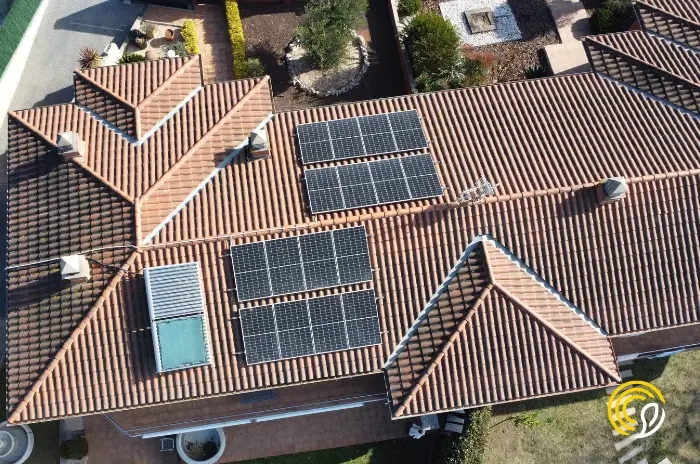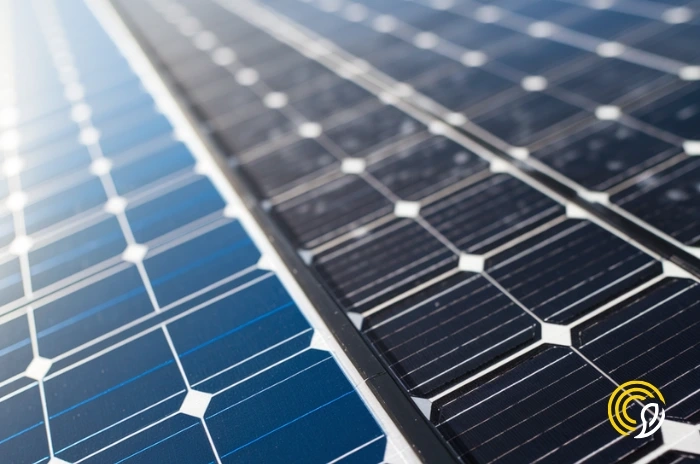
Everything about passive and active solar energy

Claudia Pardo, Content Specialist at Sunhero and a firm believer that solar energy can transform the world.
18/04/2024
3 min read
Table of Contents
The energy industry is constantly looking for ways to increase energy efficiency in households and reduce costs on electricity bills .
One particularly interesting alternative that meets these objectives is passive solar energy, a technology that is not yet well known. The truth is that, although it requires a fairly high initial investment, this form of solar energy promises large savings in energy consumption in the long term.
Do you know the difference between active and passive solar energy? In this blog article, we explain everything you need to know about these two types of solar energy.
What is passive solar energy and how does it work?
Passive solar energy is one of the oldest forms of capturing the sun’s energy, historically used by ancient civilisations to adapt to the climate of their regions.
It is a type of solar energy that aims to harness the sun’s radiation directly, without the need to transform it into another form of energy through electronic devices.
This type of energy is directly integrated into the architectural design of buildings or dwellings, known as passive houses or passive constructions. The particularity of this type of passive buildings is that they optimise the use of solar radiation to maintain optimal temperature conditions, both in winter and summer.
According to some studies, the intelligent design of passive houses or passive buildings can reduce energy consumption by up to 90% compared to traditional houses.
Passive solar energy is not only applied to new constructions, but can also be adapted to existing houses with a refurbishment and adaptation project.
On the other hand, one of the important points to take into account when considering this type of energy is the geographical location. Spain, for example, is considered a privileged place for passive solar energy, due to the large number of hours of sunshine the country has.
Difference between active and passive solar energy
Unlike passive solar energy, which captures solar energy without converting it, using light and heat directly, active solar energy uses advanced technology to convert solar radiation into different forms of energy, including systems such as solar collectors that provide heating and hot water, as well as solar panels designed for electricity production.
There are two main types of active solar energy, depending on the methods and technologies used to convert solar energy into other forms of energy:
Solar thermal energy: This form of energy uses the sun’s heat to produce heating or domestic hot water. It is transformed by solar collectors or solar collectors.
Photovoltaic solar energy (PV):Photovoltaic solar energy converts solar radiation into electricity using photovoltaic cells, usually made of silicon. Sunlight activates a reaction in these cells that produces direct current (DC), which is then converted by an inverter into alternating current (AC), which we use at home.
Advantages of passive solar energy
Passive solar energy is evolving to optimise its use in buildings, offering significant energy and economic savings with low initial investment and minimal maintenance.
These are some of the main advantages offered by passive solar energy.
- Low maintenance cost: As it does not depend on external equipment for its operation, maintenance is minimal.
- Energy and economic savings: It reduces the costs of electricity and gas bills.
- Renewable energy: By harnessing the sun, an inexhaustible source of energy, no polluting emissions are generated and therefore contributes to the conservation of the environment.
- Compatibility with photovoltaic systems: Passive solar energy is fully compatible with the installation of solar panels at home.
Whereas passive solar energy is ideal for integration into the structure of new buildings or houses, it is not always feasible due to factors such as location or architectural design.
In these cases, active solar energy, with its photovoltaic panels, presents itself as an excellent alternative for generating clean, renewable energy at home. If you are considering making the transition to solar energy, you can ask us for a personalised study, free of charge and without obligation, to find out what your potential energy savings are.
Start today!
Fill out our free solar calculator and get a custom quotation































